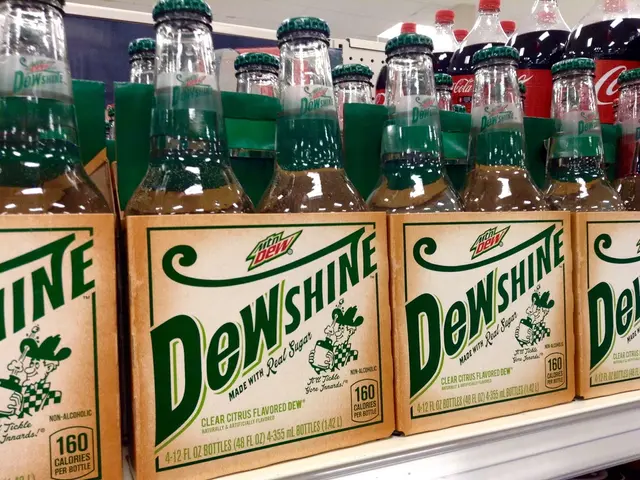Distinguishing Between Age Spots and Skin Cancer: Recognizing the Differences for Proper healthcare Management
Aging gracefully isn't always a walk in the park, especially when it comes to the skin. Disconcerting marks like age spots and skin cancer can show up and sometimes look quite similar. But understanding their differences can help ascertain whether a medical check-up is in order.
Both age spots and skin cancer are notorious for appearing on our exposed skin areas, such as the hands, face, and shoulders, thanks to continuous sun exposure. However, one critical difference between the two is their harmfulness. Age spots are relatively benign and don't demand treatment or removal, whereas skin cancer is a serious concern and may necessitate medical intervention.
Distinguishing Marks: Age Spots vs. Skin Cancer
To help determine if you're dealing with age spots or skin cancer, let's delve into their various characteristics.
Age Spots (Sunspots)
Age spots, also known as solar lentigines or liver spots, are darker patches that appear on the skin and are generally flat and smooth. They resemble yellow, brown, or gray blotches, defined by clear borders. Age spots are typically a few millimeters to centimeters in size and are a result of the body producing excess melanin to shield the skin from UV radiation[1]. Although age spots are more common on fairer skin, they can appear on any skin tone[2]. Usually, age spots tend to crop up beyond middle age[1].
Skin Cancer
Skin cancer, on the other hand, is a much more urgent issue. Skin cancer happens when damage from UV radiation or other environmental or genetic factors prompt skin cells to mutate, grow at an accelerated rate, and potentially spread[3]. Unlike age spots, skin cancer can be harmful, so keeping an eye on its warning signs is crucial.
There are three primary types of skin cancer:
- Basal cell carcinoma - typically appears as a small, pearly bump that is red or pink with areas of blue, black, or brown and has raised edges with a lower center[3]
- Squamous cell carcinoma - presents as a red or darkened patch of scaly skin or a raised lump with a lower center[3]
- Melanoma - a more dangerous form of skin cancer that can resemble an age spot but spreads unevenly, characterized by an asymmetrical shape, irregular or ragged edges, multiple colors, and an evolving appearance[2][4]
Another type of potentially precancerous mark is actinic keratosis, which may appear similar to age spots. Actinic keratosis occurs due to UV radiation damage and, if left untreated, can progress to skin cancer[1].
Determining Changes: When to Seek Medical Advice
Regular monitoring of any new or changing marks on the skin is essential. Keeping tabs on skin health and contacting a healthcare professional as soon as you notice potential signs of skin cancer or actinic keratosis can help diagnose cancer early, making treatment more manageable[1].
If a mark on the skin:
- changes in color, shape, size, or location
- appears different from other marks on the skin
- itches, crusts, scabs over, or bleeds without healing within 4 weeks
Don't hesitate to consult a medical professional immediately. Identifying skin cancer early can significantly boost treatment efficacy and enhance health outcomes[4].
Diagnosis and Treatment
To diagnose age spots, medical professionals, such as dermatologists, perform a physical examination to examine the appearance, texture, and placement of the spot[2][4]. A skin biopsy might be conducted if there is uncertainty about the diagnosis or when another condition, like skin cancer or actinic keratosis, is suspected.
Age spots typically don't require any medical treatment because they're benign. However, some people may opt for cosmetic treatments like laser therapy, chemical peels, or topical creams to diminish their appearance[4].
Skin cancer treatment varies according to the type and stage of the cancer as well as a person's specific circumstances. If feasible, dermatologists tend to surgically excise basal cell and squamous cell cancers[3]. Treatment options for skin cancer and actinic keratosis may include topical therapies, radiation therapy, chemotherapy, immunotherapy, or systemic medications[1][5].
In conclusion, understanding the differences between age spots and skin cancer can help identify when action is necessary. While age spots are generally harmless and primarily aesthetic concerns, skin cancer is serious and requires vigilance. If you notice any unusual changes in your skin, consulting your healthcare professional can help ensure early diagnosis and effective treatment.
In the realm of health and wellness, understanding and distinguishing between age spots and skin cancer can significantly impact one's health-and-wellness journey, especially in seniors. Age spots, or solar lentigines, are benign skin conditions marked by flat, smooth, and defined patches of yellow, brown, or gray blotches, typically appearing beyond middle age on the hands, face, and shoulders.
On the contrary, skin cancer is a medical condition that demands attention. It occurs due to damage from UV radiation or other factors, prompting skin cells to mutate, grow rapidly, and potentially spread. Skin cancer may manifest as three primary types – basal cell carcinoma, squamous cell carcinoma, or melanoma – each with differing appearances. Basal cell carcinoma appears as a small, pearly bump, while squamous cell carcinoma presents as a red or darkened patch of scaly skin. Melanoma, the most dangerous form, resembles an age spot but exhibits asymmetrical shape, irregular edges, multiple colors, and an evolving appearance.
Another skin condition to watch out for is actinic keratosis, which may appear similar to age spots and can progress to skin cancer if left untreated.
To maintain good skin health, regular monitoring of any new or changing spots on the skin is essential. Consulting a medical professional as soon as potential signs of skin cancer or actinic keratosis are noticed can lead to early detection, making treatment more manageable. These signs include changes in color, shape, size, or location; differences compared to other marks on the skin; and spots that itch, crust, scab over, or bleed without healing within 4 weeks.
When it comes to diagnosing and treating age spots and skin cancer, medical professionals like dermatologists perform physical examinations and, if necessary, conduct skin biopsies to ascertain the condition. Treatment for age spots is primarily considered cosmetic, while skin cancer treatment varies according to the type, stage, and person's unique circumstances.
In essence, recognizing the differences between age spots and skin cancer equips individuals with the knowledge necessary to prioritize their health-and-wellness journey. Aging gracefully necessitates vigilance against both time and skin-related concerns, such as skin cancer, and adherence to medical recommendations, including proper skin-care practices and regular medical check-ups to support overall health and wellness.








